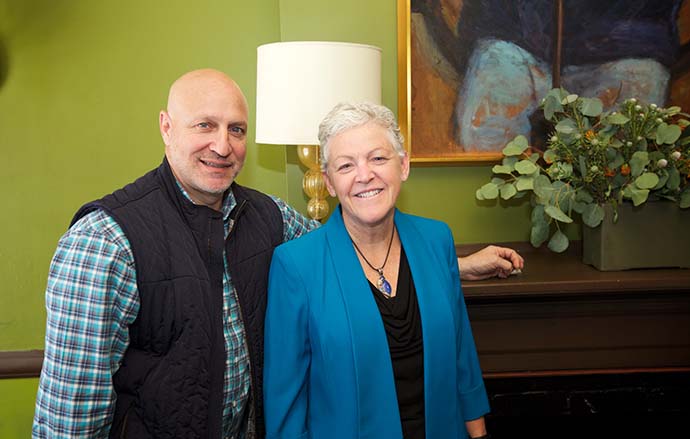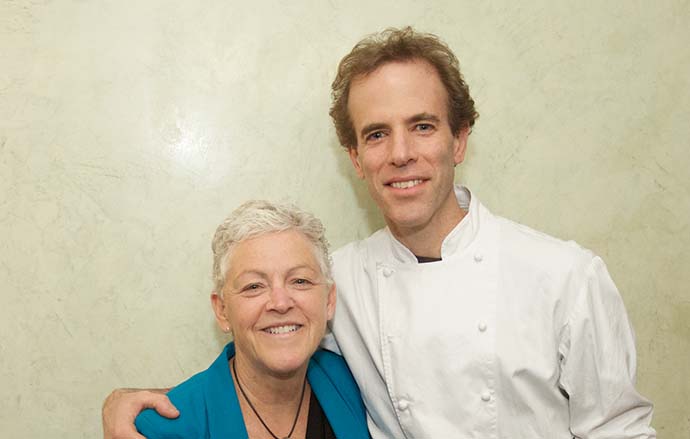
As part of our new JBF Impact Programs, the Beard foundation is hosting Issue Summits across the country to bring together thought leaders and stakeholders inside and outside the culinary community to exchange ideas on the challenges currently facing our food system. Last month, Environmental Protection Agency administrator Gina McCarthy and her team came to New York City for a Summit on food waste, touring the Union Square Greenmarket, getting a taste of Dan Barber’s WastED fare and philosophy at Blue Hill, and engaging with chefs, restaurateurs, journalists, and advocates at a roundtable at the Beard House. We sat down with administrator McCarthy to talk about the connection between food waste and the environment, how the government is trying to tackle the problem, and how to get the public involved.
--
JBF: From the EPA’s perspective, why does addressing food waste matter?
Gina McCarthy: EPA’s job is public health and environmental protection, and we look for every opportunity to keep people healthy, as well as to make sure our communities are thriving. We’ve been doing that for 45 years, and what we finally realized was that food that isn’t consumed actually gets thrown away, much of it to landfills. In fact, 30 to 40 percent of food in the U.S. ends up in a landfill, and that creates methane, which is highly global warming and produces instability in the climate. We all have to be part of tackling that issue of climate change, and doing what we can. But it’s also a matter of recognizing that, in this country, we have 48 million people who are food-insecure. 12 million of those are our kids.
We have to think about how we do better at managing our food, making sure that it’s consumed and healthy and nutritious. All of that will help not only our planet, but also help our communities and our kids.
JBF: Food waste is a problem that affects every aspect of the food system, from field to table to landfill. What federal programs or initiatives do you think are making the most progress?
GM: Well, we have joined with the U.S. Department of Agriculture to actually commit the country to try to reduce our food waste in half by 2030, and we also established something called our Food Recovery Challenge. The USDA is focused on making sure that farms produce and reduce and even eliminate waste, while also developing an infrastructure that gets the product to market, gets it stored properly, and helps our rural communities continue to thrive. The EPA is looking a little bit further down the road—how do we shift from landfill to compost, and even more importantly, how do we create a shift upstream for our restaurants, at our grocery stores, our food commercial wholesalers and retailers.
There are many ways in which we can work with hotels and sports stadiums and others to look at how we can get people engaged in their food more, buying more locally, because that reduces our greenhouse gas impact, and it also keeps our smaller farms in business.
You can see the progress being made in our efforts and partners in New York City and New York state, making sure that people’s food is getting healthier, and that it’s fully consumed, and what’s not consumed goes to composting. It’s really fun to look at all the different ways in which you can look at the food from the farm to the table, and use that as a way to engage people more in protecting their own public health, and also in helping us to save the environment and address climate change.

JBF: Could you tell me a little bit more about the Food Recovery Challenge, and what you guys provide from the EPA side?
GM: It’s really all about partnerships. It’s about getting everybody engaged. We’re not going to reach this goal unless people start really embracing it at all levels. We’re dealing with restaurants, as well. Chefs are really part of the solution here. They can creatively look at how you utilize every bit of food in a good way and how you can build the infrastructure for composting that consumers can then take advantage of. I think it’s also about reminding people that an average American family of four wastes about $1,600 because they don’t consume all the food they buy. We also have a whole food steward program, where individuals and faith organizations can join and gain access to resources which walk you through actions you can take to reduce waste.
The program begins with some exciting things like “shop your fridge,” which means before you go shopping, check out what’s in your refrigerator first, and see if there are any creative ways to utilize that food. It talks about planning your menu, so you’re not buying more than you need. It talks about how to store food properly, preserve it, and freeze it. There are apps now that USDA is putting out that help you understand what the expiration dates on foods really mean, so that people aren’t tossing the food prematurely, and recognizing how they can manage that. And we have also opportunities to just make the connections to composting infrastructure, as well as food donation opportunities.
We’re all about tools, partnerships, and getting people engaged, and, as a result, we’ve been able to work with USDA to divert more than 600,000 tons of food waste, and get that reused.
JBF: What do you see as the path forward for tackling food waste on a national level? There are so many different state and local health and waste regulations; do you see standardizing those regulations on a federal level as a step in the right direction?
GM: I think the important part at the federal level is to support states and local communities getting engaged in this, as well as individuals; and if there are barriers that are created at the federal level, we need to reduce those.
The more people who understand where their food comes from, the more they understand the value of agriculture, and the more they can begin to work together to make sure that their food is healthy and secure. The more you federalize that, the more you really don’t understand what’s going on, and the less engaged individuals are. Right now, we have really big challenges in the environmental world. Climate change is perhaps one of the biggest. It will take all hands on deck to be able to make the transformation in the way in which our country is running and our communities are served.
We need to have everybody thinking about stepping up and reducing food waste, and composting instead of using landfills is really part of the solution, and the federal government will not deliver that. It’s going to need to be individuals demanding it, and consumers are really good at doing that, as long as they have information. And so, we’re trying to get people engaged, get everybody volunteering, and get partnerships developed. Once that happens, you begin to see models of behavior and models that can be emulated, and it’s our job to share those and encourage it.
JBF: What has the public reaction been like to the Food Waste Challenge and the new food waste reduction goals?
GM: It’s been very well received. We hear from the chefs that they don’t want to waste food. We also hear from the manufacturers, the commercial food wholesalers, and others, that they save money by not wasting food. But it’s really a marriage of getting them interested in the programs that we have, utilizing the tools that we have, and getting their consumers engaged, you know? Individuals need to get engaged. When you put “I buy local” on a restaurant, people go in there. They equate that with being fresh, and they also equate it with community service and sharing the same social mores and goals. That’s what it is all about: returning to our roots of working together, and working within our natural resources and protecting those, because that’s how we’re going to keep our kids safe and healthy.
Everybody should come to the table and recognize that partnership is about everybody winning, nobody losing. It’s about engaging people where their values are, looking at the momentum you see towards locally grown foods, more nutritious school food services, and all of those things people care about. I can be the tail that helps wag that dog. I’m very happy with that.
Learn more about our JBF Impact Programs.
--
Maggie Borden is associate editor at JBF. Follow her on Instagram and Twitter.







